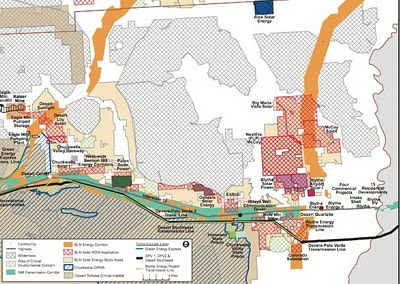BrightSource Makes Weak Case for Palen Solar Project

BrightSource Energy filed a relatively weak argument for why the California Energy Commission (CEC) should reconsider its opinion of the Palen Solar project in the Colorado Desert region of southern California. A Presiding Member Proposed Decision in December recommended that the full Commission reject the project primarily because of the impacts on wildlife, but BrightSource requested more time so that it could make a stronger case that its project would not be a problem for wildlife. The data submitted by BrightSource suggests its design is likely more harmful to birds than other types of technology, and that if the Palen project is built it would add significantly to the cumulative impact on birds in the Chuckwalla Valley region and pose new dangers. The data submitted by BrightSource compares bird mortality at its Ivanpah Solar project - located further north near Las Vegas - to the Genesis and Desert Sunlight Solar projects in the Chuckwalla Valley area. ...




